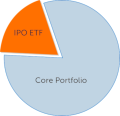The Uber, Lyft and Peloton IPOs are all trading below issue price. WeWork is struggling to survive. What’s wrong with the IPO market?
This article is the first of a 6-part series from Renaissance Capital on how the misguided initiatives by powerful IPO market participants have diminished investor protections and manipulated the process to benefit a select few. We start with a historical perspective of the internet bubble of 1999-2000 and then show how subsequent legislation, particularly the JOBS Act of 2012, has had unintended detrimental consequences for the IPO market. Finally, we conclude by examining how the latest initiative, direct listings, could hurt all IPO investors.
The purpose of this series is to explain what went wrong, and what we can do to restore the integrity of the IPO market for all participants.
The Beginnings
Throughout the 1990s, IPO issuance flourished, resulting in a near-complete lack of investment discipline. More and more IPOs came to market with increasingly tenuous business models and stratospheric valuations. IPOs peaked at 502 deals in 1996, the same year that then Fed Chairman Alan Greenspan coined the term “irrational exuberance.”
Returns were supersized: in 1999, the year prior to the deluge, average returns were 276%. 81% of the IPOs had less than $100 million in sales and those averaged $21 million in sales and $14 million in net losses; two-thirds were internet companies. This group finished year-end with an average market cap of $1.9 billion and a price-to-sales ratio of 89x.
Their minuscule revenue bases, unproven business models and burgeoning losses dramatically increased the risk and decreased the liquidity of the IPO market. The result: the 2000 dot.com collapse produced a near drought of small-cap tech IPOs for over a decade.
Twenty years later, we have come full circle.
Like their 1999-2000 predecessors, today’s overvalued companies are highly unprofitable due to their pursuit of growth at any cost, with an average net loss of $36 million. Unlike the 1999-2000 dot.com bubble, today’s tech giants have significant revenue bases, with average revenue of $485 million. Instead of a flood of IPOs coming into the public markets, the bubble is trapped in private markets.
In the next article, we will recount how the Sarbanes-Oxley Act of 2002 exacerbated the IPO market’s woes and how the JOBS Act of 2012 helped create today’s problem of huge tech IPOs coming to market with high valuations that are quickly slashed by public investors.
Hijack Series (Updated)
Part 1: How the IPO Market Is Being Hijacked
Part 2: How Government Regulations Nearly Killed the IPO Market
Part 3: How the JOBS Act Abuses Most Public Investors
Part 4: How the IPO Market went from Dot.com to Unicorn Bubble
Part 5: Why Direct Listings Are Fake IPOs
Part 6: The Direct Listing Bailout for Unicorn Investors
Part 7: How to Promote and Protect Healthy Capital Creation
Become a Pro
Sign up for a free trial of IPO Pro.


